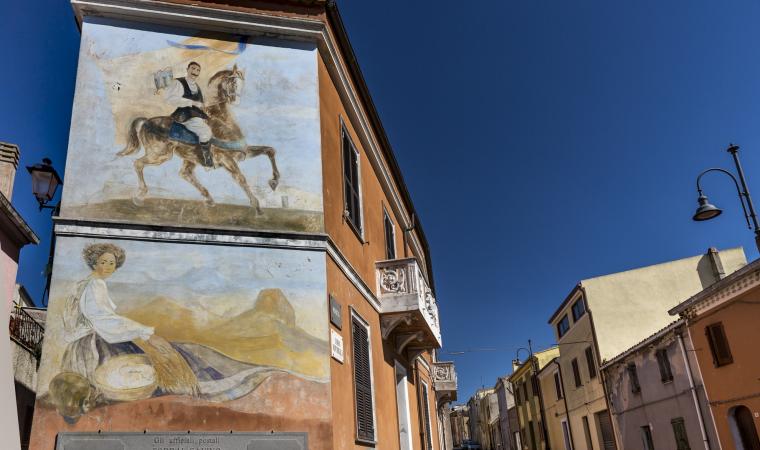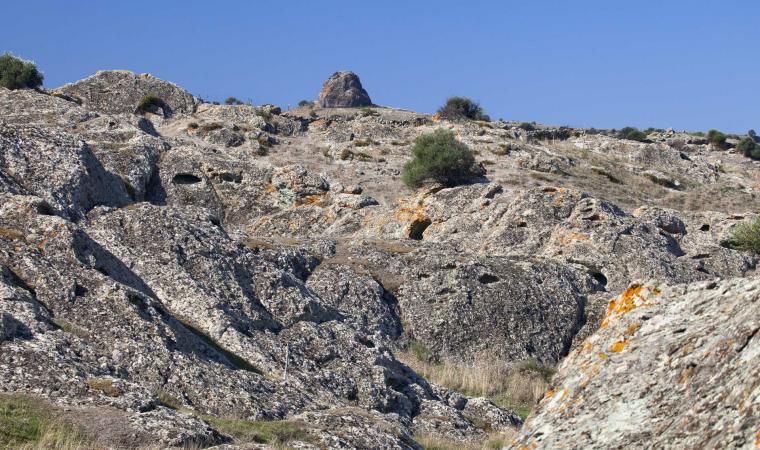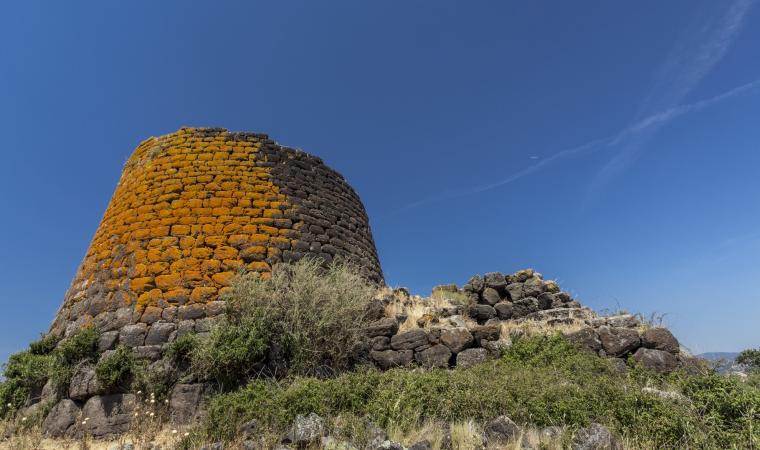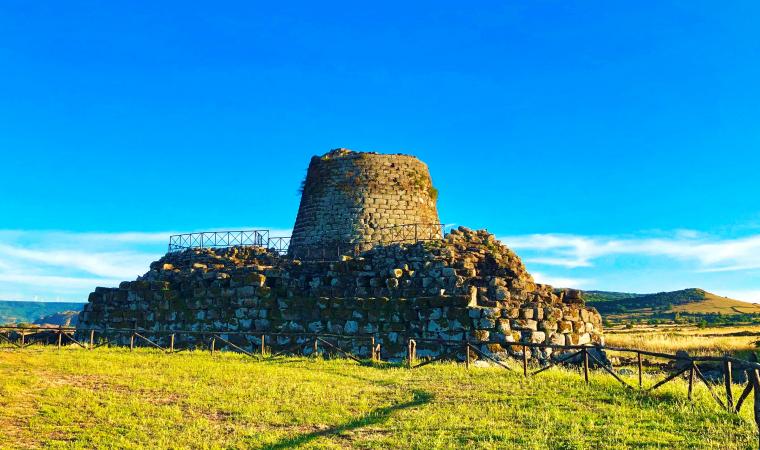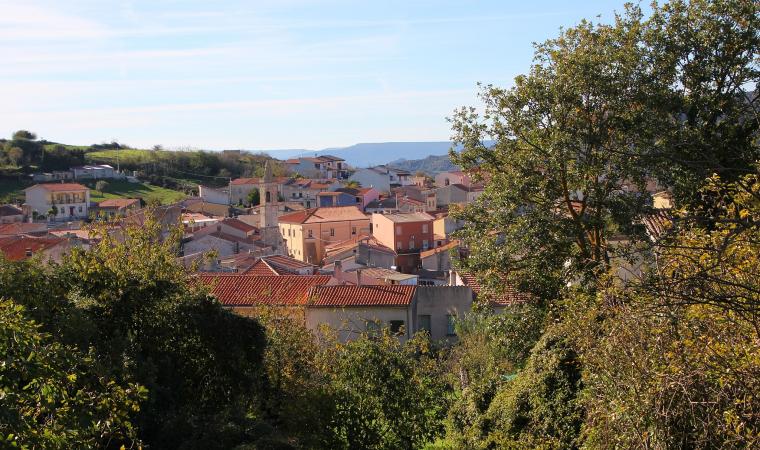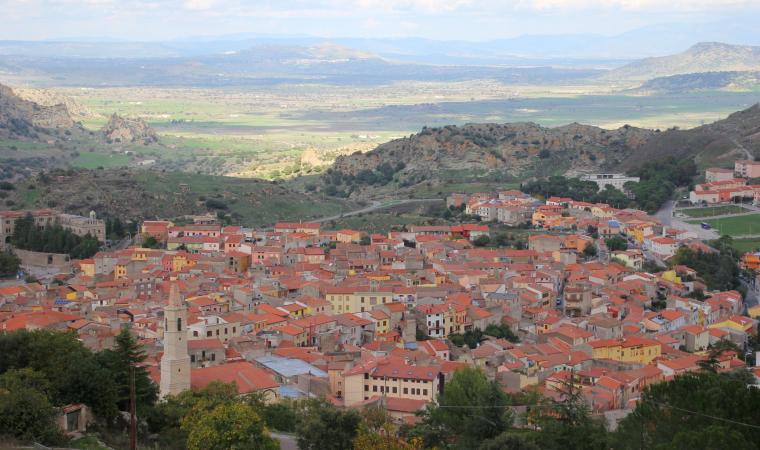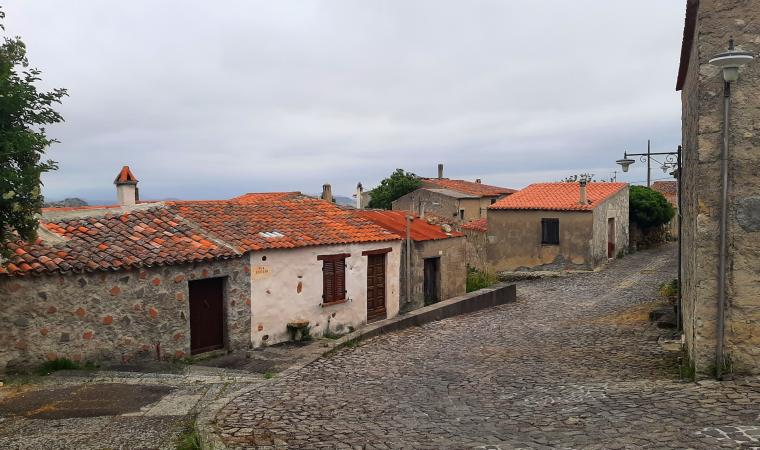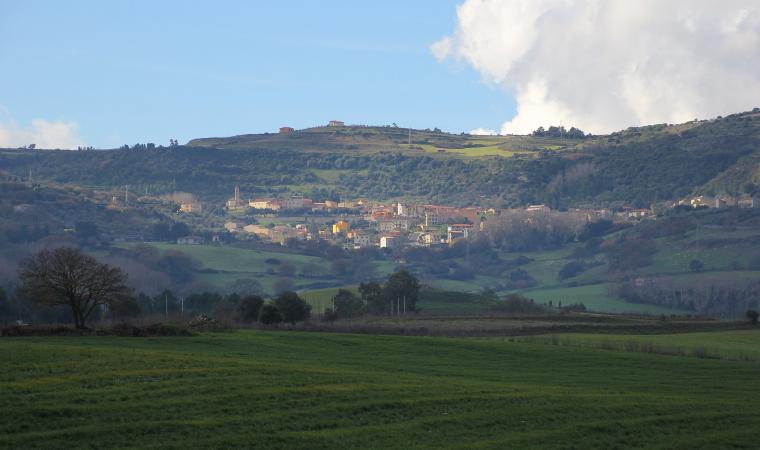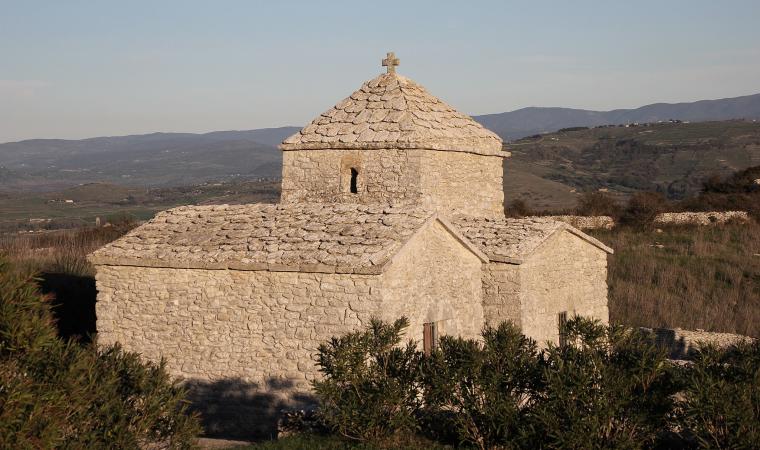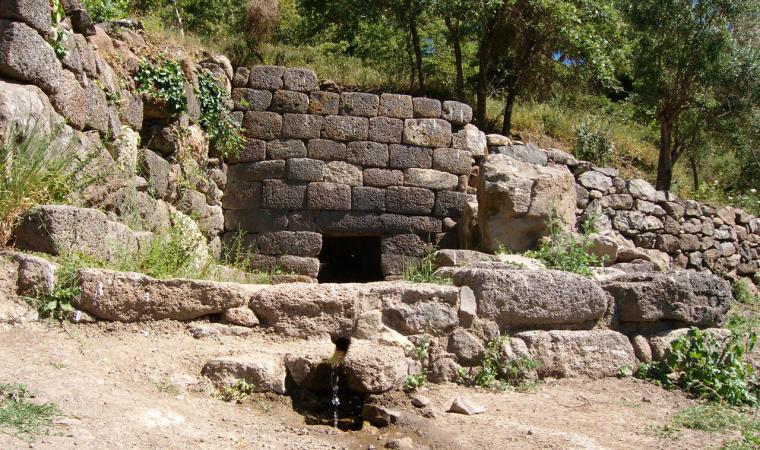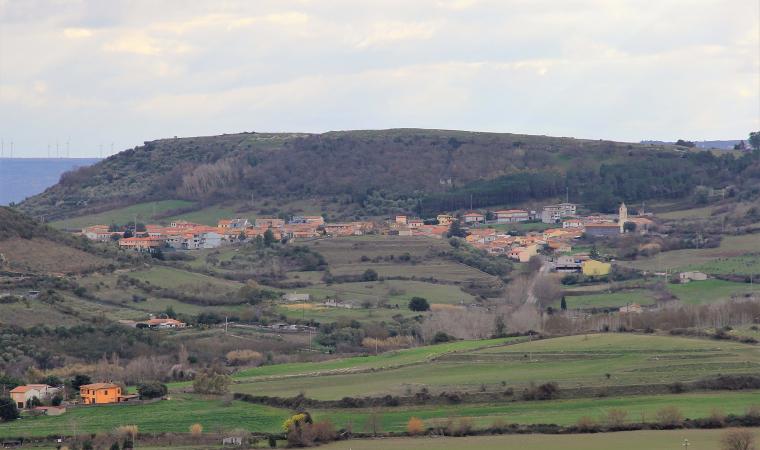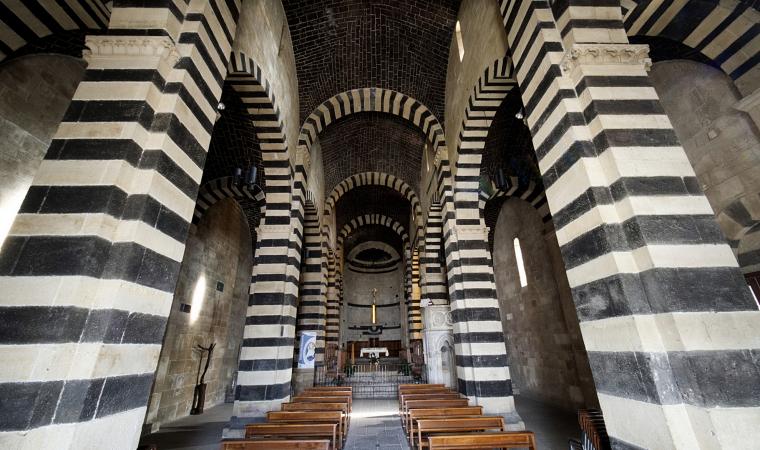It emerged thanks to a particular geological phenomenon and stands on a plateau amidst nuraghi and volcanic elevations. It is also the stage of numerous legends in which the protagonists are the janas, the fairy beings of Sardinian mythology. Sa Pedra Mendalza, literally ‘the stone that cleans or fixes’, is a basalt block, about a hundred metres high, that emerges a short distance from the village of Giave, in the captivating landscape designed by the volcanic craters of Meilogu. In geological language, it is defined a neck, which originated thanks to a process that began perhaps two million years ago, following the occlusion and extinction of a volcano. Over time, water and wind have patiently eroded the cone, while the internal ‘cap’ of magma has solidified, preserving itself until it reached its current shape.
It has been supposed that the ‘stone’ was considered sacred since ancient times, as is evident in various churches in the surrounding area. This is where the legends that surround it originated, all with one point in common: the interior of the former volcano is inhabited by janas, the fairies who dwell in the natural cavities and ravines of Sardinia. The northeastern side is smoother than the others and has a sort of ‘mark’ at the base, where a secret entrance would open. From here, su camminu de sas fadas (the path of the fairies) also branches off and is really a strip of basalt created by a river of magma that flowed from the volcano, which has filled the cracks in the calcareous soil. Along the path, the magical fairies are said to roam the neighbouring villages at night, in search of the ‘purifying fire’, an element to which the origin of the name mendalza may be linked. Moreover, it is said that the rock contains three chests within it: one full of gold, one full of silver and the third populated by the deadly muscas magheddas (or maceddas), monstrous flies with the power to devastate entire villages.
A short distance from the basalt block, you can observe and approach, with caution, the base of another volcanic crater that stretches for about two hectares. The craters of Meilogu became protected natural monuments in 1994. The most distinctive of the five that are part of the complex is located about one kilometre north of Pedra Mendalza: it is Mount Annaru-Poddighe. It is nearly 500 metres high and has craters that are almost intact. You can observe a pond there in the cold months, while in spring and summer you can go down inside and observe its structure. The territory of Giave is not only fascinating for its geology but it also overlooks the Valley of the Nuraghi, one of the areas with the greatest density of Nuragic fortresses. This includes the unusual nuraghe Oes, with two towers, a three-storey keep and a secondary tower, which contained a single room. Next to it, there is a sacred area, with a megaron temple, a Tomb of Giants and what was most probably a megalithic circle.


